Colon polyps pathophysiology: Difference between revisions
Jump to navigation
Jump to search
| Line 32: | Line 32: | ||
*** The molecular basis of this transformation is still unclear. However, it has been attributed to failure of [[apoptosis]]. | *** The molecular basis of this transformation is still unclear. However, it has been attributed to failure of [[apoptosis]]. | ||
*** [[BRAF]] mutations are associated with crypt serration. | *** [[BRAF]] mutations are associated with crypt serration. | ||
*** There are three different subtypes of [[Hyperplasia|hyperplastic]] polyps based on degree of serration and content, including microvesicular type, goblet cell–rich type, and mucin-poor type. | |||
** Sessile serrated polyps | ** Sessile serrated polyps | ||
** Traditional serrated adenomas | ** Traditional serrated adenomas | ||
Revision as of 18:08, 23 January 2018
|
Colon polyps Microchapters |
|
Diagnosis |
|---|
|
Treatment |
|
Case Studies |
|
Colon polyps pathophysiology On the Web |
|
American Roentgen Ray Society Images of Colon polyps pathophysiology |
|
Risk calculators and risk factors for Colon polyps pathophysiology |
Editor-In-Chief: C. Michael Gibson, M.S., M.D. [1]; Associate Editor(s)-in-Chief: Sadaf Sharfaei M.D.[2]
Overview
Pathophysiology
Pathogenesis
- Any form of unregulated growth in the colon may cause polyps. The exact etiology is unclear. However, risk factors may contribute to the formation of polyps.
- There are four different types of polyps including inflammatory, hamartomatous, serrated, and adenomatous polyps, which have different pathogenesis.
- The pathophysiology of colon polyps depends on the histological type.
{{#ev:youtube|oJU7CokNLZY}} {{#ev:youtube|7n5EnaLOV54}}
Inflammatory polyps
- Inflammatory polyps are non-neoplastic polyps that occur following intestinal inflammation, infections, or ischemia.[1][2]
- They mostly occur in patients with inflammatory bowel disease, mainly ulcerative colitis.
- They are considered as pseudopolyps which contain inflammatory infiltrations with distorted mucosa.
- It had no malignant potential. However, it is recommended to biopsy the lesion and surrounding mucosa.
- Microscopic pathology of biopsy shows mixture of normal, ulcerated, and regenerating mucosa which is surrounded by areas of mucosal loss.
Hamartomatous polyps
- Hamartomatous polyp is an overgrowth of mature cells and connective tissue elements including smooth muscle, lamina propria, and cartilage, and fat. They are covered by a hypertrophic epithelium.[3]
- They might be pedunculated, inflamed, or smooth polyps which are solitary or multiple.
- Solitary hamartomatous polyps, also known as juvenile polyps, can present more commonly in younger population.
- Solitary polyps has no significant risk of cancer. However, multiple polyps of the colon have a 10% risk of malignancy.
Serrated polyps
- Serrated polyps are different polyps which have variable malignant potential. They include hyperplastic, sessile serrated and traditional serrated polyps. They have various histopathologies and manifestations.
- Hyperplastic polyps are the most common polyps.
- They are small outpouching, less than 5 mm, which are located mostly in rectosigmoid area.
- Hyperplastic polyp is infolding of the crypt epithelium that forms serration or saw-toothed appearance.
- The molecular basis of this transformation is still unclear. However, it has been attributed to failure of apoptosis.
- BRAF mutations are associated with crypt serration.
- There are three different subtypes of hyperplastic polyps based on degree of serration and content, including microvesicular type, goblet cell–rich type, and mucin-poor type.
- Sessile serrated polyps
- Traditional serrated adenomas
- Hyperplastic polyps are the most common polyps.
- Serration
- BRAF mutation
- KRAS mutation
Adenomatous polyps
Genetics
- The development of colon polyps is the result of multiple genetic mutations.
- Genetic mutations might cause hereditary polyps disorders.
Familial adenomatous polyposis (FAP)
- FAP is due to mutations in the following genes:
- APC gene, which is located on chromosome 5 in band q21 or band q22 (5q21-q22)
- MUTYH gene, which is located on chromosome 1 between bands p34.2 and p32.1 (5p34.3-p32.1)
- MYH-associated polyposis (MAP) is caused by mutations in the MYH gene.
- It is thought that Peutz-Jeghers syndrome is the result of deletion or partial deletion of STK11 (LBK1) gene, located on chromosome 19p13.3.
- It is caused by mutation in the APC gene located in chromosome 5q21 (band q21 on chromosome 5).
Serrated polyposis syndrome
- They develop multiple serrated adenomatous polyps in the upper part of the colon.
Familial juvenile polyposis
- It is an autosomal dominant disorder.
- It increases risk of colorectal cancer
- It has extra-colonic tumors.
- There has been some association with the following genes:
- SMAD4 on chromosome 18
- PTEN on chromosome 10
Gross Pathology
- On gross pathology, outpouching, pedunculated or flat lesions are characteristic findings of colon polyps.
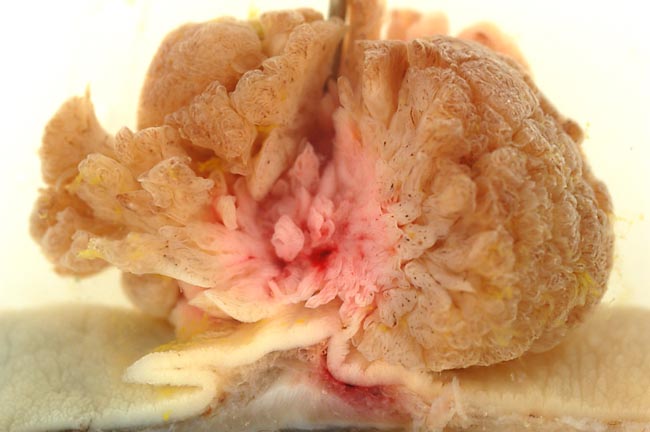 |
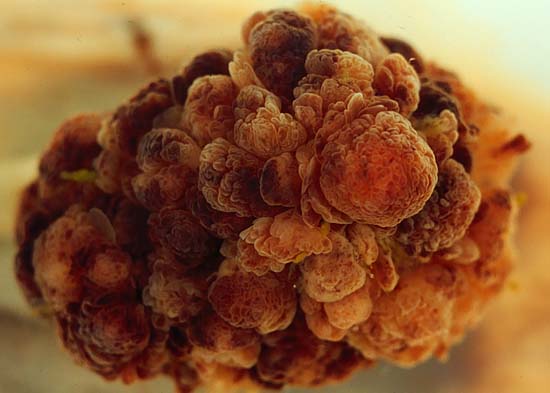 |
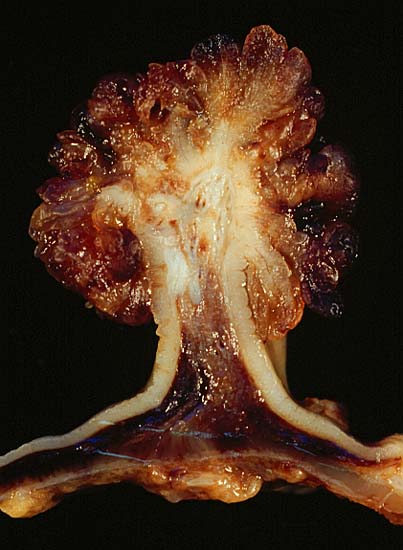 |
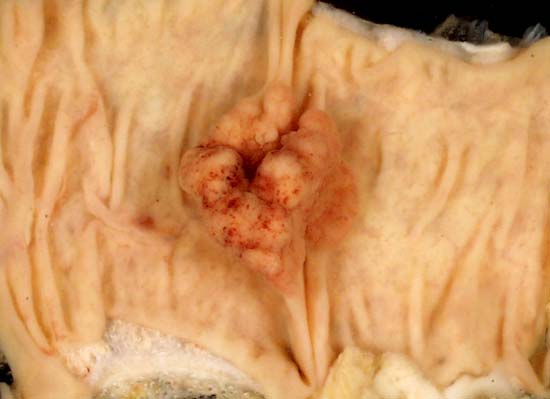 |
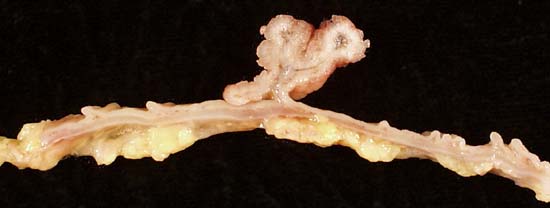 |
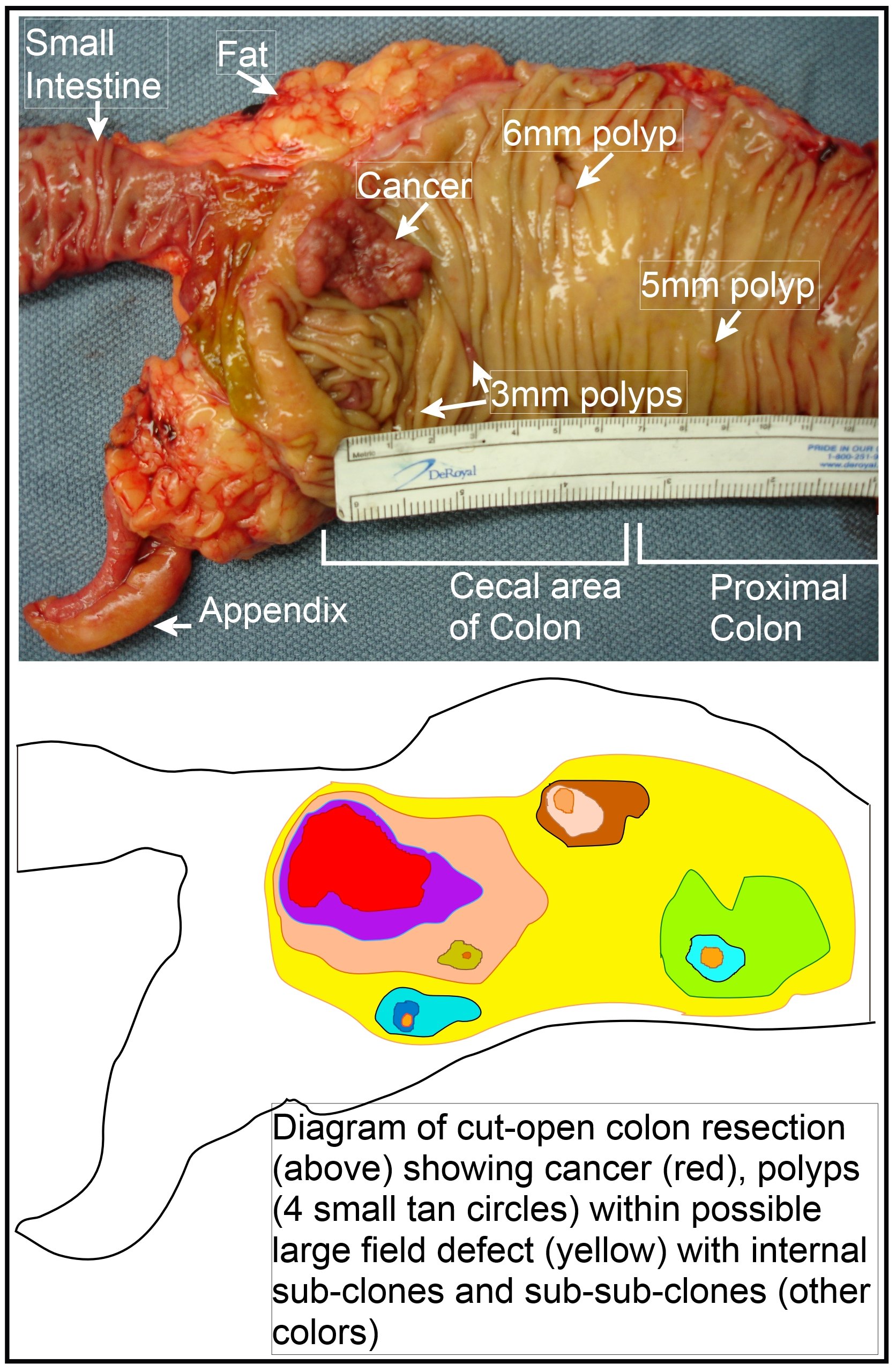 |
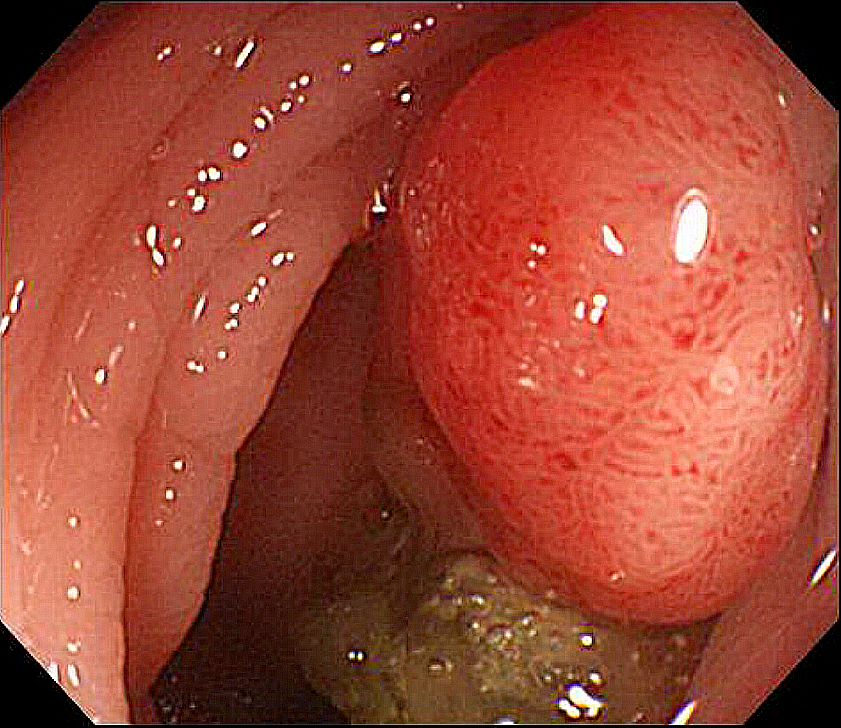 |
Microscopic Pathology
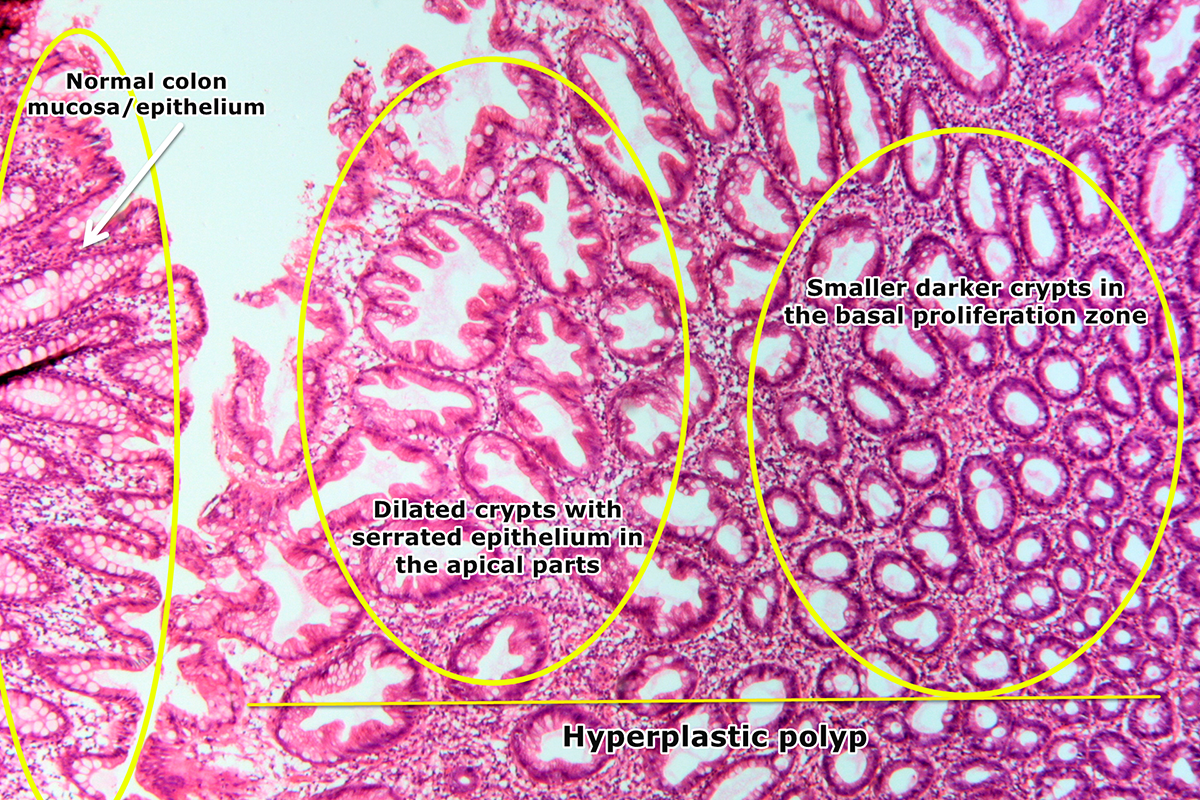
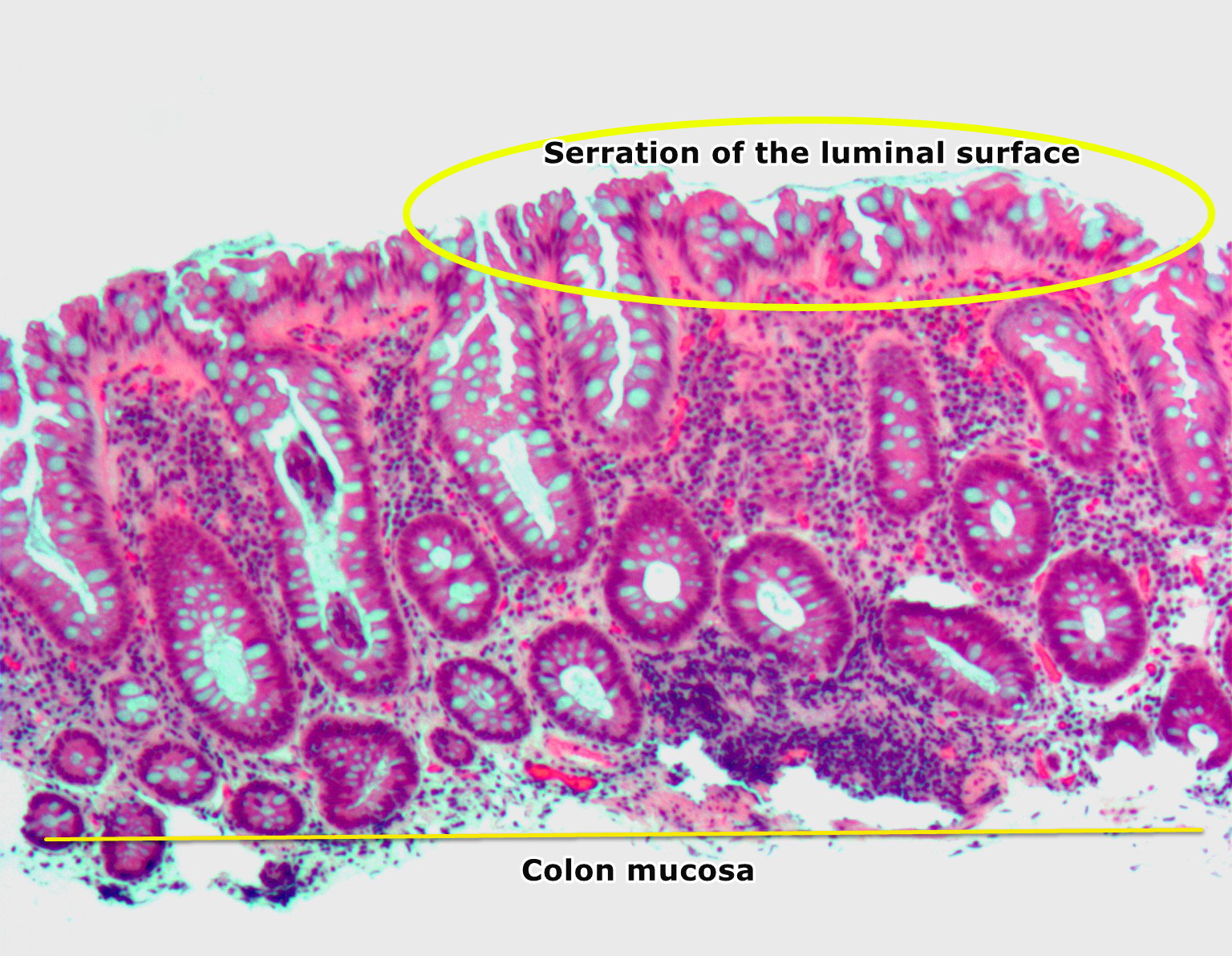
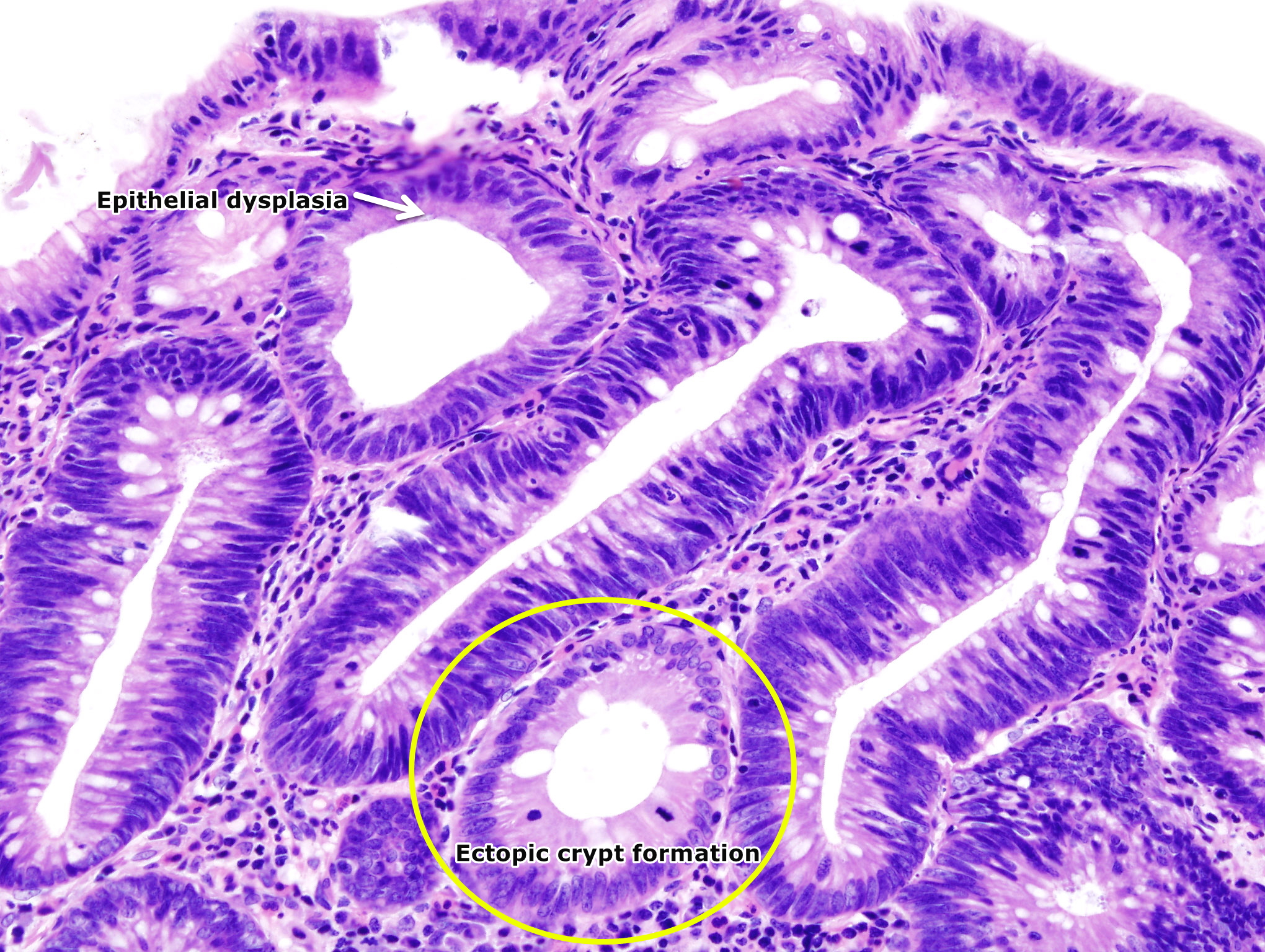
References
- ↑ Shussman, N.; Wexner, S. D. (2014). "Colorectal polyps and polyposis syndromes". Gastroenterology Report. 2 (1): 1–15. doi:10.1093/gastro/got041. ISSN 2052-0034.
- ↑ Li SC, Burgart L (2007). "Histopathology of serrated adenoma, its variants, and differentiation from conventional adenomatous and hyperplastic polyps". Arch. Pathol. Lab. Med. 131 (3): 440–5. doi:10.1043/1543-2165(2007)131[440:HOSAIV]2.0.CO;2. PMID 17516746.
- ↑ Zbuk KM, Eng C (2007). "Hamartomatous polyposis syndromes". Nat Clin Pract Gastroenterol Hepatol. 4 (9): 492–502. doi:10.1038/ncpgasthep0902. PMID 17768394.
- ↑ "File:Image of resected colon segment with cancer & 4 nearby polyps plus schematic of field defects with sub-clones.jpg - Wikimedia Commons".